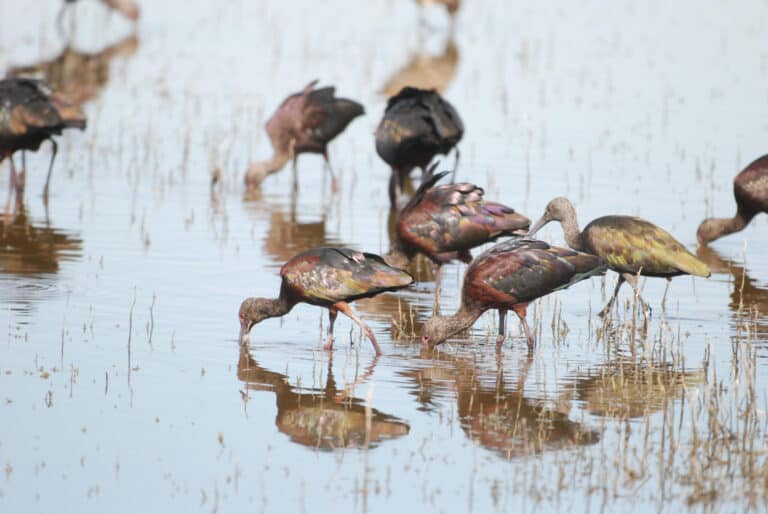White-faced ibises feed and confab in a flooded field at Kern National Wildlife Refuge, about four miles south of Tulare Lake. (Photo by Miguel Jimenez, US Fish and Wildlife Service)
Tulare Lake and nearby floodwaters could stick around for over a year, providing ample wetland habitat for birds in the southern Central Valley.
TULARE LAKE, CA—Beyond a ‘road closed’ sign, telephone poles file out into flood water, stretching all the way to the hazy coastal range in the distance. Occasional houses, farming equipment and barns emerge from the choppy blue expanse like a mirage.
And everywhere you look, birds: Ibises bob between rows of drowned wheat in nearby flooded farm fields. Cliff swallows swoop back and forth where water laps against asphalt, gathering mud for their nests. Black-necked stilts, tri-colored blackbirds, egrets, western sandpipers, curlews, long-billed dowitchers, and more have found plentiful habitat in the southern Central Valley this year—including the resurrected Tulare Lake, which surged back to life with this winter’s historic rains.
“There will be hundreds or maybe even thousands of birds in those fields, foraging and looking for insects and other tasty morsels,” says Xerónimo Castañeda, conservation manager for California Audubon’s working lands program.

Last week, Tulare Lake—which straddles Tulare and Kings counties—reached its forecasted peak size at 182 square miles, about the same surface area as Lake Tahoe, though a tiny fraction of its depth. The lake has wreaked havoc: Homes and farmland were submerged. Nearby towns scrambled to raise levees. Tens of thousands of cows were evacuated. […]
Full article: baynature.org

